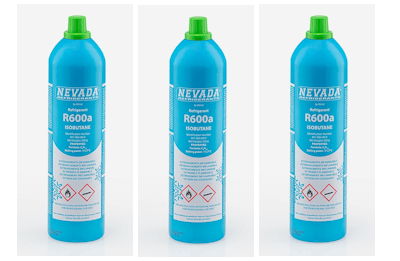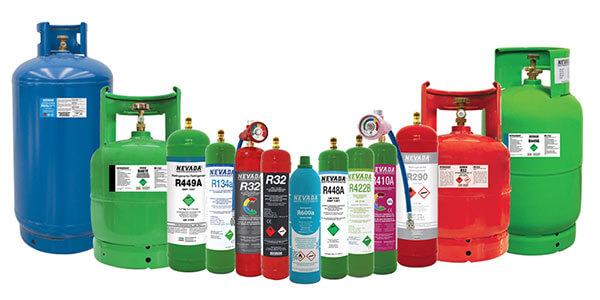Refrigerants are integral to modern cooling systems, and the search for more environmentally friendly options has led to the development of R600a, also known as isobutane. This hydrocarbon refrigerant has gained attention for its low environmental impact and efficient thermodynamic properties. In this article, we delve into the history of R600a, its advantages, and its comparison with other refrigerants.
A Brief History:
R600a, or isobutane, is a hydrocarbon refrigerant that has been used since the late 1990s as an alternative to synthetic refrigerants with higher global warming potential (GWP) values. Its adoption gained momentum due to its minimal environmental impact, energy efficiency, and compliance with stringent environmental regulations.

Pros of R600a Isobutane Refrigerant:
Environmentally Friendly: R600a stands out for its low GWP of 3 and zero ozone depletion potential (ODP), making it an eco-friendly choice. As concerns about climate change grow, R600a’s negligible contribution to global warming and the ozone layer depletion makes it an attractive option.
Energy Efficiency: Isobutane’s excellent thermodynamic properties contribute to enhanced energy efficiency in cooling systems. Its high latent heat of vaporization allows it to absorb more heat per unit of refrigerant, leading to lower energy consumption and reduced greenhouse gas emissions.
Regulatory Compliance: With environmental regulations tightening, R600a’s eco-friendliness positions it as a compliant option under global initiatives like the Montreal Protocol and the European Union’s F-Gas Regulation. It aligns with the efforts to phase out high-GWP synthetic refrigerants.
Wide Applicability: R600a is used in various cooling applications, from domestic refrigerators and freezers to commercial refrigeration equipment. Its compatibility with existing systems allows for retrofits and replacements, reducing the need for costly overhauls.
Cons of R600a Isobutane Refrigerant:
Flammability: A notable drawback of R600a is its flammability. Being a hydrocarbon, it is classified as an A3 refrigerant with a higher flammability rating. Proper handling, installation, and maintenance are essential to mitigate safety risks associated with flammable substances.
Limited Cooling Capacity: Compared to some synthetic refrigerants, R600a’s cooling capacity can be slightly lower, which might necessitate system adjustments to maintain optimal performance in certain applications.
Comparison to Other Refrigerants:
When compared to hydrofluorocarbons (HFCs) and hydrochlorofluorocarbons (HCFCs), R600a offers distinct advantages due to its negligible environmental impact. It outperforms these synthetic refrigerants in terms of GWP and ODP. However, its flammability requires careful consideration in terms of safety measures during installation, servicing, and operation.

Conclusion:
R600a isobutane refrigerant’s journey from an alternative to a mainstream choice is a testament to its environmental benefits and energy efficiency. Despite its flammability concerns, the refrigerant’s attributes have positioned it as a viable option for eco-conscious industries and consumers alike. As the refrigeration industry continues to evolve, R600a’s role in providing sustainable cooling solutions underscores its significance in creating a greener future.
**Disclaimer: When working with Isobutane R600a, it is crucial to follow safety guidelines and regulations to prevent accidents or mishaps. Always consult professionals and adhere to local regulations when handling or installing R600a-based systems.
